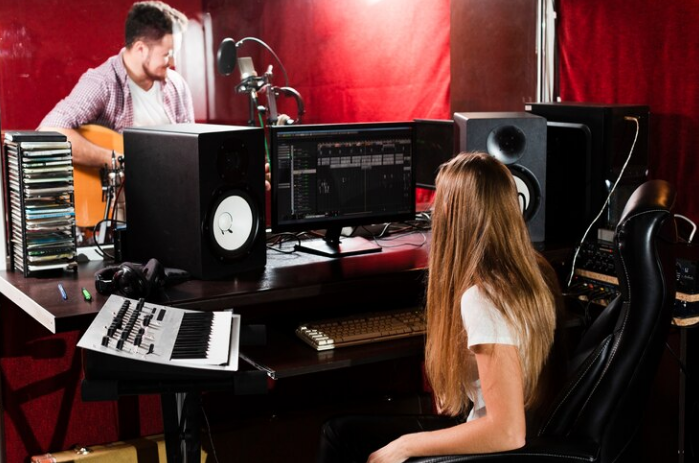No matter how much you edit, you can't turn bad audio into good audio. Podcast listeners prefer shows with clear, professional-quality sound, and no one wants to listen to episodes filled with distracting noises like crackles or echoes. Poor sound quality can drive listeners away, and your episodes won’t be appreciated if they don’t sound good. Many podcasters know the frustration of trying to work with unusable audio. Fortunately, if you're in Los Angeles, there are plenty of professionals who specialize in Los Angeles Post Production and Los Angeles Sound Design, offering their expertise at affordable rates.
Tips for Los Angeles Podcasters to Make Their Audio Stand Out
1. Invest in High-Quality Equipment
In Los Angeles, there's access to top-tier equipment used for audio improvement, which is essential for post-production. While it's possible to record a podcast using your laptop's built-in microphone, your listeners won’t appreciate it. Invest in quality microphones, headphones, and audio tools to capture crisp, clean sound. Good equipment is the foundation for great audio and sound design.
2. Choose a Suitable Recording Space
Selecting a quiet recording space is crucial. Look for a room with minimal background noise, and if possible, add soundproofing. This is especially important in a bustling city like Los Angeles, where noise can be a challenge. Recording during quieter times can also help ensure your audio is clean and clear.
3. Maintain Consistent Audio Levels
Keeping the audio levels steady throughout your podcast helps maintain listener engagement. Sudden changes in volume can be distracting or annoying. Consistent sound levels improve the overall experience, and post-production experts in Los Angeles can assist in refining these details.
4. Mute Unnecessary Microphones
Turn off the microphones of people who aren’t speaking to avoid picking up unnecessary sounds, such as chair squeaks or desk noises. This reduces the amount of unwanted noise, making editing easier later on.
5. Use Audio Cues for Mistakes
Mistakes happen, and editing them can be time-consuming. To speed up the process, use an audio cue—such as a loud clap or distinct sound—right after the mistake. This creates a spike in your audio file, making it easier to spot during editing and quickly remove the error.
6. Create a Noise Profile
A noise profile is a brief recording (around four to five seconds) of the ambient sound in your recording space. This sample allows your editing software to identify and filter out background noise, helping your podcast sound cleaner and more professional.
7. Test Your Audio on Multiple Devices
Before releasing your podcast, test the audio on different devices such as smartphones, computers, and headphones to ensure consistent quality. If there are issues, fix them before publishing to ensure your listeners have a pleasant experience on any platform.
Collaborate with Local Experts
By following these tips, you can significantly improve your podcast’s audio quality. However, you can also consult with local sound design experts in Los Angeles. Collaborating with studios or experienced sound designers can provide you with valuable advice and help make your podcast sound polished and professional.
With the right approach, you can produce high-quality audio that your listeners will enjoy, ensuring your podcast stands out from the rest.





Comments